In this section I will deal with formal logic, Hegelian logic, Marxist logic, symbolic logic, and transcendental logic. Among these, I will explain formal logic in some detail, since it is closely related to Unification Logic. I will explain other systems more briefly, since I merely want to show that Unification Logic is able to solve the difficult problems in traditional logic. Therefore, only certain relevant points are dealt with, as was done in the chapter on epistemology. Among the systems of logic, Hegel’s logic is treated somewhat in detail, since there are many arguable points in it, and its explanation necessarily becomes a little longer. It may be noted that to understand Unification logic itself, this section can be skipped.
1. Formal Logic
Formal logic, which was established by Aristotle, is more the study of the forms and laws of thinking, and it does not deal so much with the content of thinking. According to Kant, “That logic has already, from the earliest times, proceeded upon this sure path is evidenced by the fact that since Aristotle it has not required to retrace a single step…. It is remarkable also that to the present day this logic has not been able to advance a single step, and is thus to all appearance a closed and completed body of doctrine.” 1 Formal logic has existed, almost without change, for two thousand years since Aristotle. This is because formal logic contains considerable truth, in so far as it is concerned with thinking. Let me now introduce the main points of formal logic, and point out which parts are valid, and which are insufficient.
1.1. The Laws of Thought
Formal logic enumerates the following four laws as the laws of thought.
(1) The Law of Identity
(2) The Law of Contradiction
(3) The Law of the Excluded Middle
(4) The Law of Sufficient Reason
The law of identity can be expressed by the form “A is A,” as in the statement, “A flower is a flower.” This implies that, in spite of changes in phenomena, the substance of the flower remains unchanging. This also implies identity in thinking itself. That is to say, the concept of “flower” has one and the same meaning in every case. Furthermore, this principle can also imply that two concepts are in agreement, as in the statement, “A bird is an animal.”
The law of contradiction can be expressed by the form “A is not not-A.” This can be regarded as the principle of identity stated in reverse. In saying that “a flower is not a non-flower,” one is actually saying that “a flower is a flower.” Likewise, in saying that “a bird is not a non-animal,” one is actually saying that “a bird is an animal.” One is an affirmative way of expression, and the other is a negative way of expression, but the content remains the same.
The law of the excluded middle can be expressed as, “Everything is either A or not-A.” This means that there can be no third or middle judgment.
The law of sufficient reason was first advocated by Leibniz. Its meaning is that every act of thinking comes into being due to necessary reasons. Expressed in a more general way, it becomes the law of cause and effect, which states that everything has a sufficient reason for its existence. Reason here has two meanings: namely, basis and cause. Basis is the opposite concept to conclusion, and cause is the opposite concept to result. Therefore, this law means that thought always has its basis, and that existence always has its cause. There are many other laws, but all of them are derived from these four fundamental ones. Formal logic also consists of three fundamental elements, that is, three elements of thought: concept, judgment, and inference. I will explain each of these next.
1.2. Concept
A concept is a general representation (or idea) through which the essential characteristics of a thing are grasped. A concept has two aspects, namely, intension and extension. Intension refers to the qualities, or properties, common to a certain concept, and extension refers to a set of beings to which the concept is applied. To explain these, let me take living beings as an example. Living beings can be classified into concepts on various levels, such as animals, vertebrates, mammals, primates, and human beings. Living beings are those beings that have life. Animals, in addition to life, have sense organs. Vertebrates have a backbone. Mammals have the nature of suckling their young. Primates have the ability to grasp things. Human beings have reason. In this way, the living beings of each level, represented by a certain concept, possess a certain common nature. The qualities, or properties, common to a certain concept are called the intension of that concept.
Among living beings, there are animals and plants, and among animals there are mollusks, arthropods, vertebrates, etc. Among vertebrates, there are reptiles, birds, mammals, etc. Among mammals, there are primates, carnivores, etc. Finally, among primates there are the various kinds of apes and human beings. A set of beings to which a certain concept is applied is called the extension of that concept (see table. 10.1).
Table. 10. 1 A Comparison between Unification Logic and Traditional Systems of Logic
Unification Logic | Formal Logic | Dialectical Logic | Transcendental Logic | |
Forms of Thought | Objective & Subjective | Subjective | Objective | Subjective |
Content of Thought | Objective & Subjective | Objective | Objective | |
Laws of Thought | Give and Receive Law | Law of Identity & Law of Contradiction | Dialectical Method | Transcendental Method |
Standard of Thought | Structure of the Original Image | |||
Characteristics | Theory of Collation | Theory of Form | Theory of Reflection | Theory of Synthesis |
When we compare any two concepts, that concept whose intension is broader and extension narrower is called a “specific concept” (or subordinate concept), and that concept whose intension is narrower and extension broader is called a “generic concept” (or superordinate concept). For example, when we compare the concept of vertebrate with the concepts of reptile, bird, or mammal, the former is a generic concept in relationship to the latter; and the latter are specific concepts in relationship to the former.
Also, when we compare the concept of animal with the concepts of mollusks, arthropods, or vertebrates, the former is a generic concept, and the latter are specific concepts. Further, when we compare the concept of living beings with the concepts of plants or animals, the former is a generic concept, and the latter are specific concepts. If we repeat this operation over and over again, we will eventually reach the highest generic concept, beyond which no other concept can be traced. Such concepts are called “categories” (see fig. 10.2).
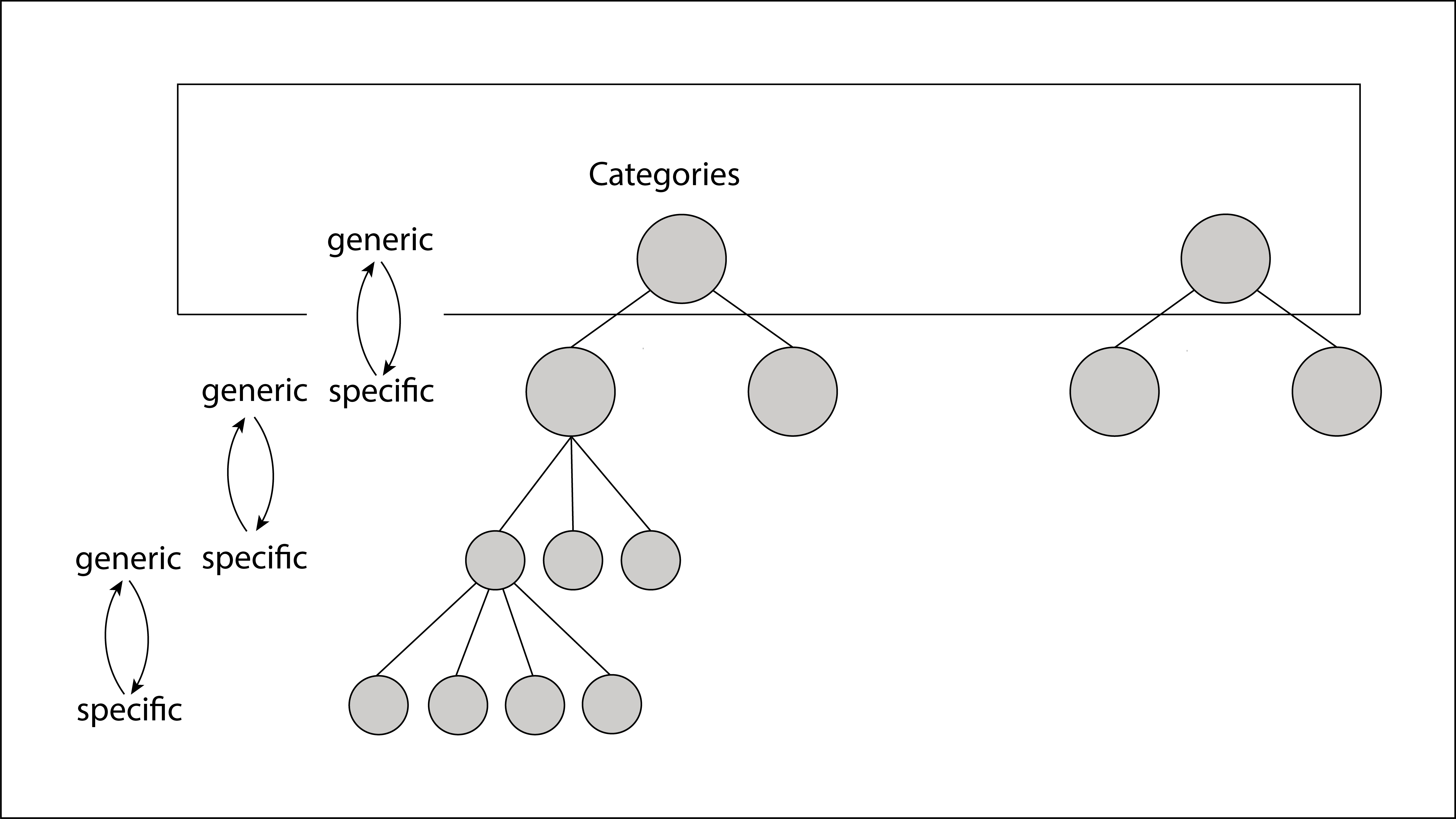
Fig. 10.2. Progressive Series Reaching up to Categories
In addition, the pure concepts that reason possesses by nature (rather than through experiences) are also called categories. These categories vary from philosopher to philosopher. The reason for this is that the most important and fundamental concepts in each thought system are considered categories. Accordingly, the definition of categories varies from philosopher to philosopher. Aristotle was the first philosopher to establish categories. He set up the following ten categories, taking clues from grammar:
(1) substance
(3) quality
(5) place
(7) position
(9) action
(2) quantity
(4) relation
(6) time
(8) condition
(10) passivity
In the modern age, Kant established twelve categories, which were mentioned in “Epistemology,” based on the twelve forms of judgment.
1.3. Judgment
a) What is a Judgment?
An assertion of something about a certain object is called a “judgment.” Logically, a judgment is an affirmation or denial of a relation among certain concepts. When expressed in language, a judgment is called a proposition. A judgment consists of the three elements of subject, predicate, and copula. The object to which thinking is directed is the subject; the predicate describes its content; and the copula connects the two. Generally, the subject is expressed as ‘S,’ predicate as ‘P,’ and copula as ‘―’. A judgment is formulated as “S―P.”
b) Kinds of Judgment
As for the kinds of judgment, the twelve forms of judgment proposed by Kant are still employed in formal logic today. The Kantian twelve forms of judgment refer to the four main headings of quantity, quality, relation and modality, each of which is divided into three subdivisions. They are as follows:
Quantity
Universal Judgment:
Particular Judgment:
Singular Judgment:
Every S is P.
Some S is P.
This S is P.
Quality
Affirmative Judgment:
Negative Judgment:
Infinite Judgment:
S is P.
S is not P.
S is not-P.
Relation
Categorical Judgment:
Hypothetical Judgment:
Disjunctive Judgment:
S is P.
If A is B, C is D.
A is either B or C.
Modality
Problematic Judgment:
Assertive Judgment:
Apodictic Judgment:
S may be P.
S is in fact P.
S must be P.
As explained above, Kant established three forms of judgment in each of four headings of quantity, quality, relation, and modality. In our daily life, we face various incidents and situations, and in order to cope with them, we think in various ways. Needless to say, the content of thinking is different from person to person. However, as far as judgment is concerned, it is in accordance with the above-mentioned forms of judgment. That is, a judgment is either a judgment of quantity (much or little, many or few), a judgment of quality (is or is not), a judgment of relation (among concepts), or a judgment of modality (How is it certain?).
c) Basic Forms of Judgment
Of the above forms of judgment, the most basic is the categorical judgment. If the universal and particular forms of judgment concerning quantity, and the affirmative and negative forms of judgment concerning quality are combined with the categorical judgment, the following four kinds of judgment can be obtained:
Universal Affirmative:
Universal Negative:
Particular Affirmative:
Particular Negative Judgment:
Judgment: Every S is a P. . . . . (A)
Judgment: No S is a P. . . . . (E)
Judgment: Some S is a P. . . . . ( I )
Some S is not a P. . . . . (O)
The twelve forms of judgment, with the exceptions of disjunctive and hypothetical judgments, can be treated as categorical judgments. Then, if we arrange these categorical judgments in terms of quantity (a singular judgment can be treated as a universal judgment) and quality (an infinite judgment is included in the affirmative judgment), we arrive at the four basic forms of judgment, A, E, I, and O. The code letters A, E, I, and O derive from the first two vowels of the Latin words affirmo (‘I affirm’―A, I) and nego (‘I negate’―E, O).
d) Distributed and Undistributed Terms
In order not to fall into error in making a categorical judgment, one must examine the relationship between the extension of the subject and that of the predicate. In one case, a term (subject or predicate) in a judgment applies to an entire extension, but in other cases, it does not. When a term in a judgment applies to an entire extension, that term is said to be “distributed.” When a term applies to only a part of its extension, that term is said to be “undistributed.”
Distribution and undistribution of subject and of predicate are important concepts in a judgment. In a judgment, there is a case where both subject and predict are distributed, but there is a case also where subject and predicate can not both be distributed, and there is yet another case where only one of either subject or predicate can be distributed.
For example, in the universal affirmative judgment “every man (S) is an animal (P)” (judgment A), the subject is distributed while the predicate is undistributed (see fig. 10.3). In other words, the term ‘man’ applies to the proposition “every man is an animal,” throughout its entire extension, but the same is not true about the term ‘animal’.
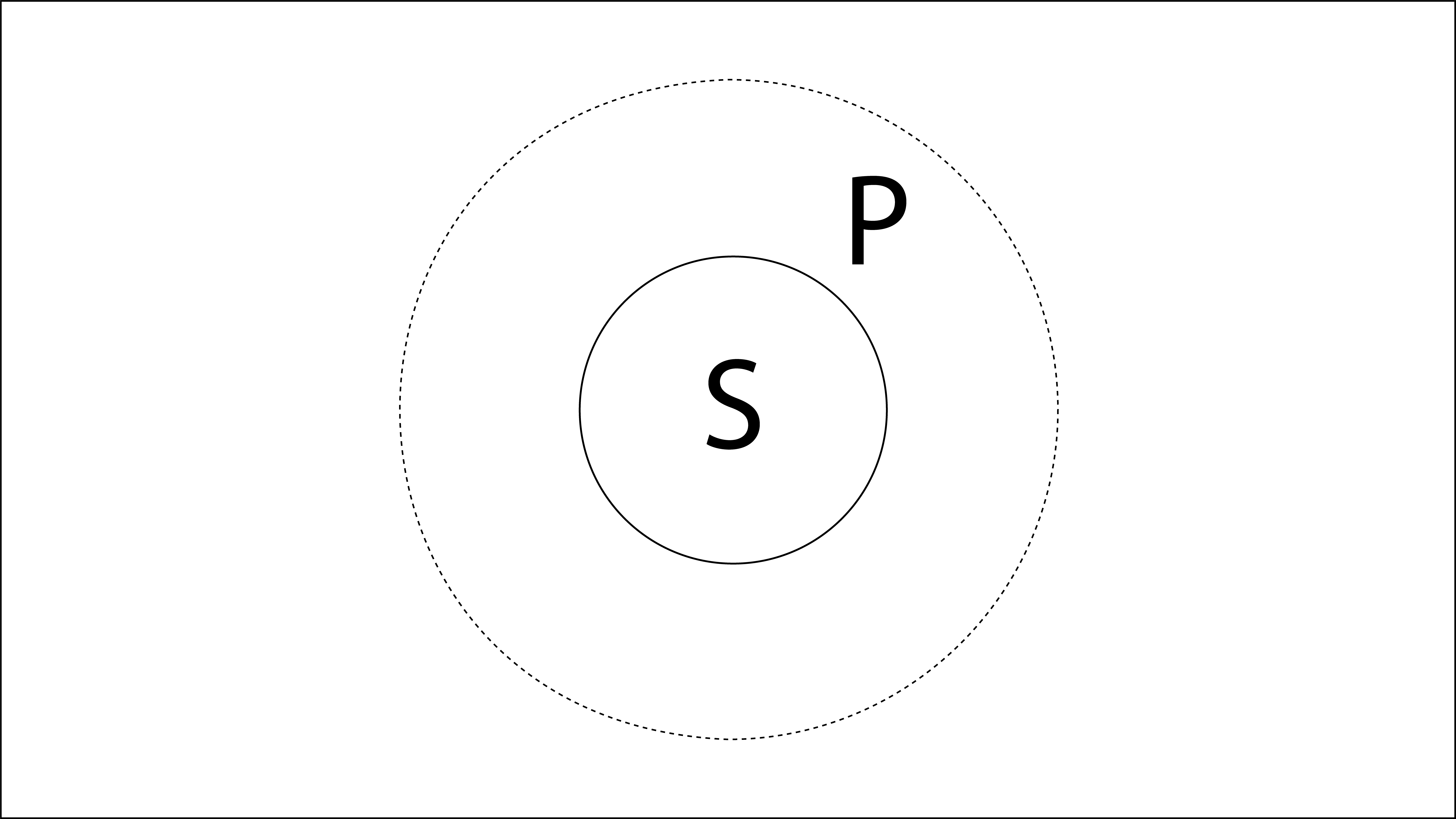
Fig. 10.3. Universal Affirmative Judgment
In the universal negative judgment “every bird (S) is a non-mammal (P),” subject and predicate are both distributed (see fig.10.4).
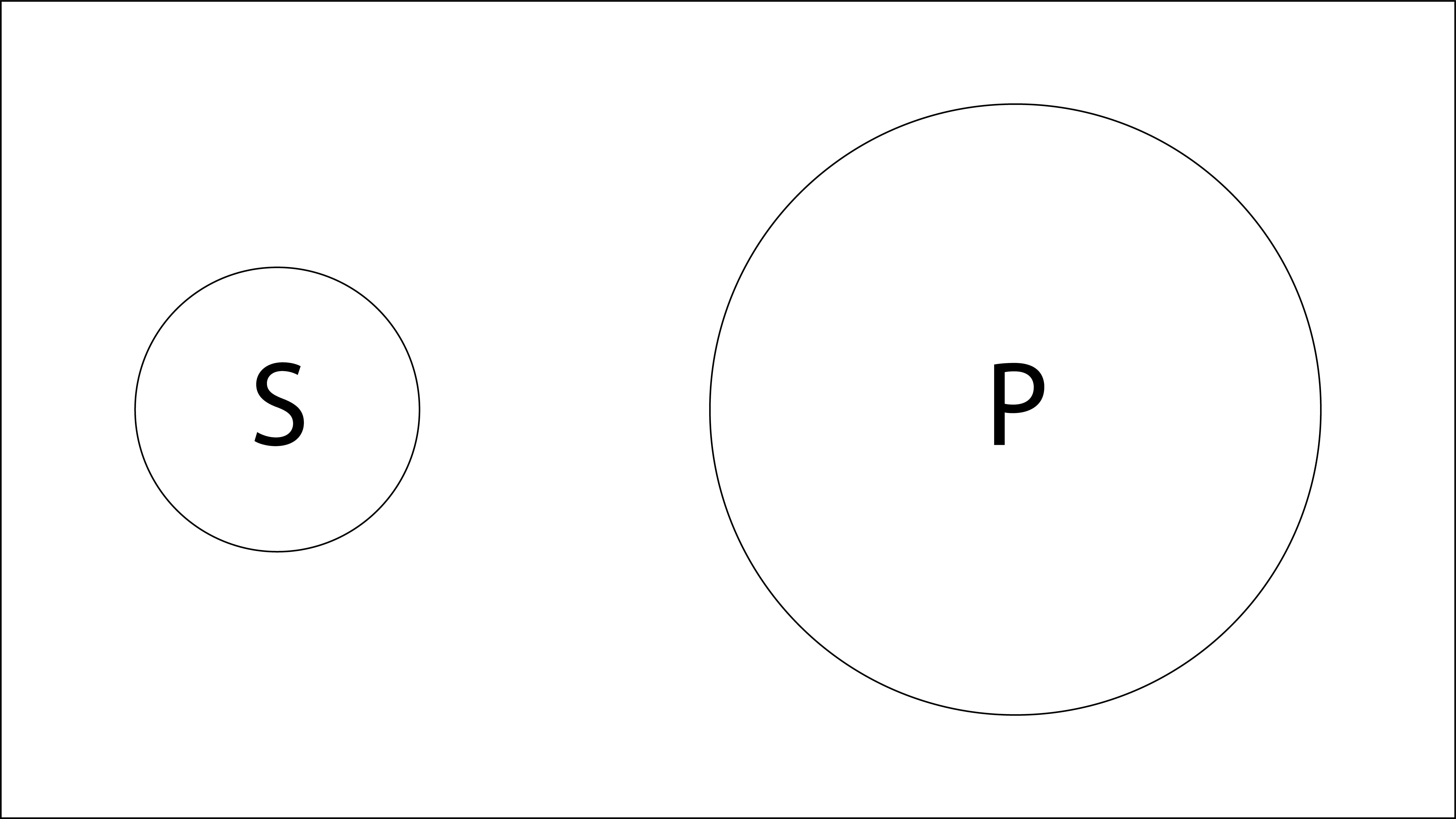
Fig. 10.4. Universal Negative Judgment
In the particular affirmative judgment “some flowers (S) are red (P),” both subject and predicate are undistributed (see fig. 10.5).
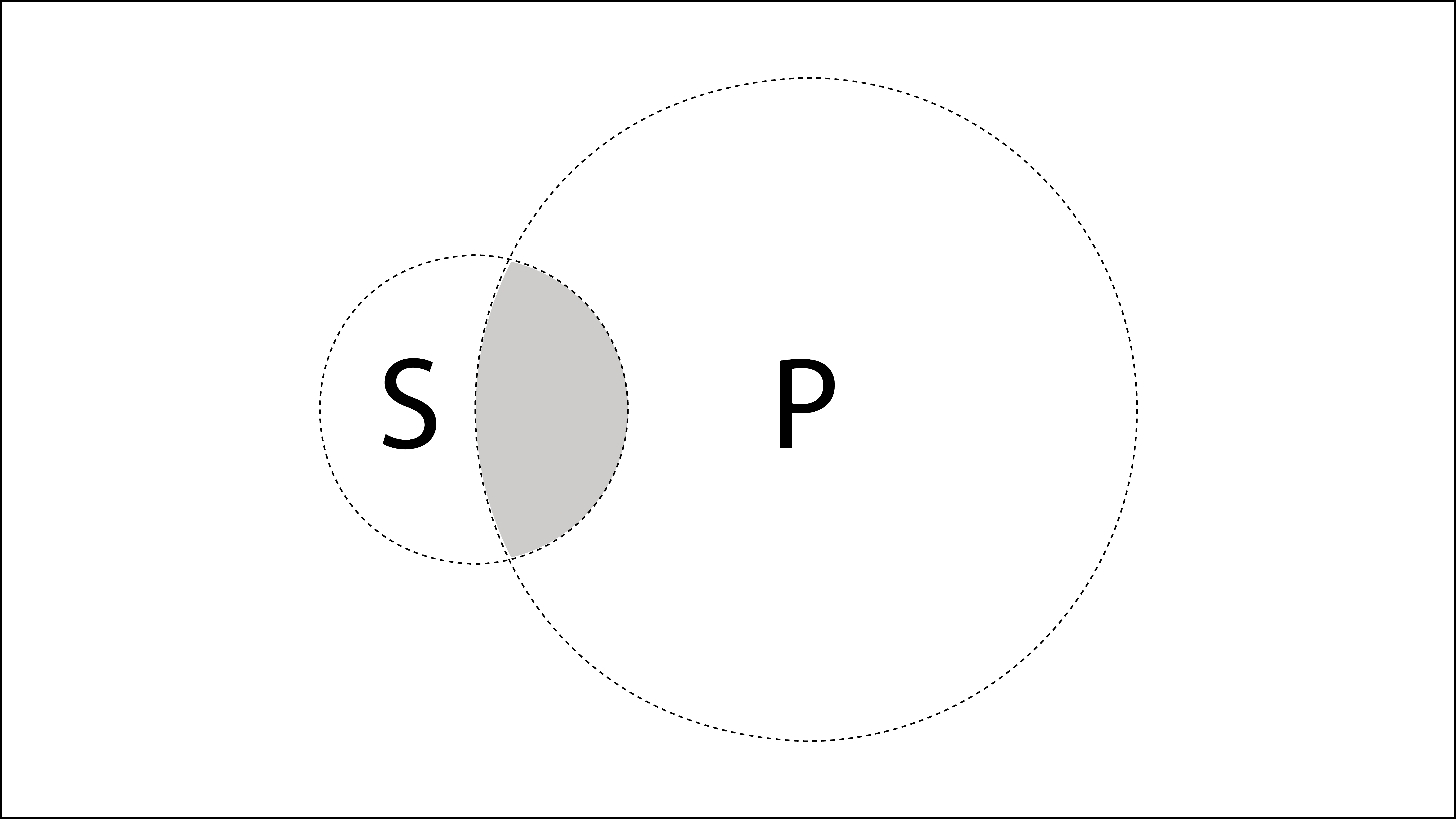
Fig. 10.5. Particular Affimative Judgment
In the particular negative judgment “some birds (S) are non-carnivorous animals (P),” the subject is undistributed, since some S does not belong to P, while the predicate is distributed (see fig. 10.6).
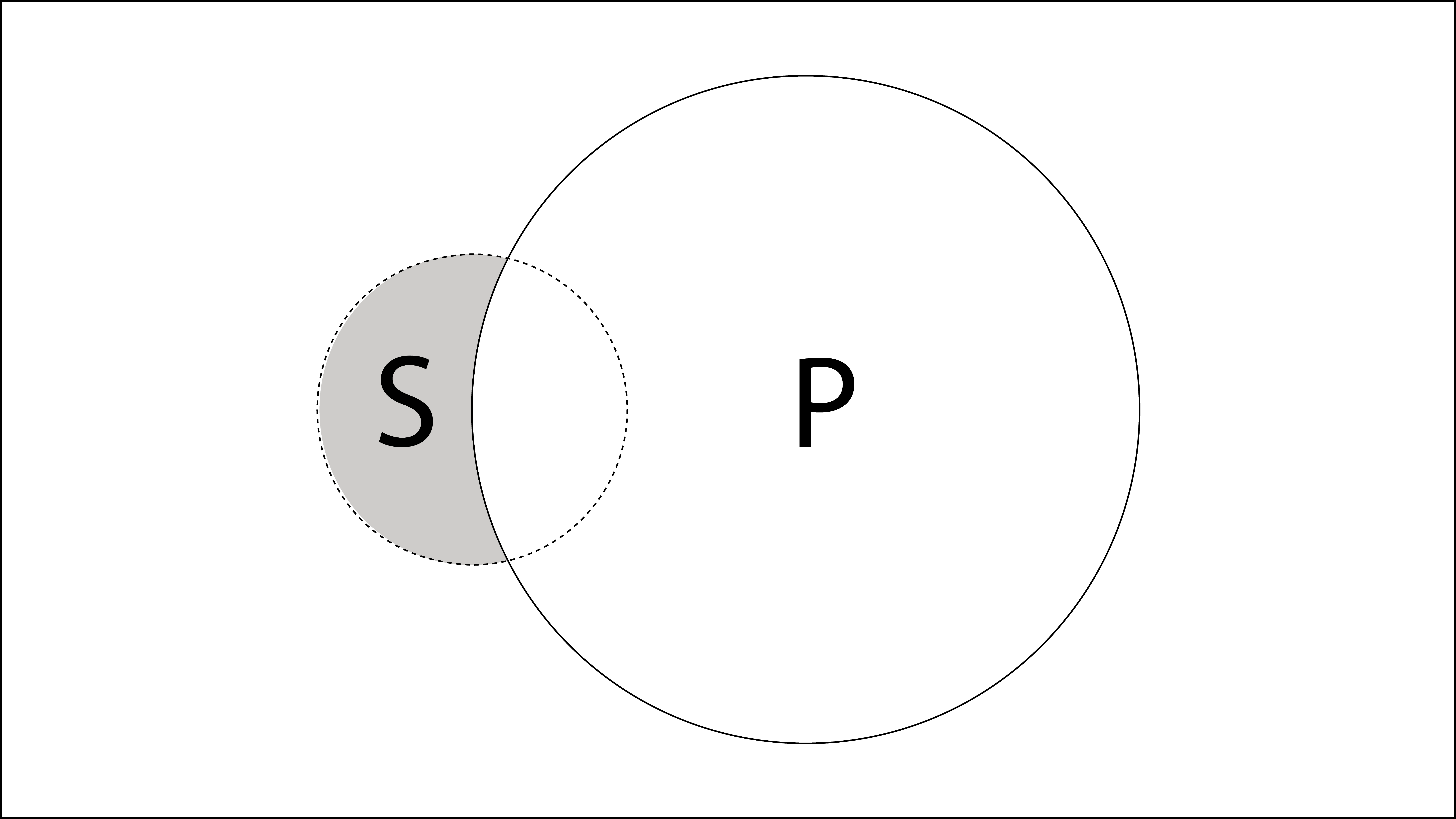
Fig. 10.6. Particular Negative Judgment
In the above judgments A, E, I, and O, the distribution of terms is a rule of judgment. If one violates the rule, one’s judgment will fall into error. If, for example, one draws the conclusion “every lover of mountains is a hermit” from the judgment “every hermit is a lover of mountains,” one will fall into undue distribution; thus, the judgment is a fallacy. In a universal affirmative judgment, S should be distributed, whereas P should be undistributed. In this example, however, both S and P are regarded as distributed.
1.4. Inference
Inference refers to the process of reasoning whereby a conclusion is derived from one or more propositions. In other words, a conclusion “therefore, S―P” is derived from already known judgments, which are called premises. When there is only one proposition as the premise, the inference is called a “direct inference.” When there are two or more propositions as premises, it is called an “indirect inference.” Indirect inference includes syllogism, induction, and analogy. Let me briefly explain each of these.
a) Deduction (Deductive Method)
Deduction refers to an inference wherein a particular conclusion is drawn from more than one universal, general premise. The representative deduction is the syllogism, as indirect inference, which draws a conclusion from two premises.
The first premise in the syllogism is called the major premise, and the second premise is called the minor premise. In the categorical syllogism, the major premise contains the major term (P) and the middle term (M), and the minor premise contains the minor term (S) and the middle term (M). The conclusion contains the minor term (S) and the major term (P). The following is an example of the categorical syllogism.
Major premise: Every man (M) is mortal (P).
Minor premise: Every hero (S) is a man (M).
Conclusion: Therefore, every hero (S) is mortal (P).
The above can be expressed with signs as:
M is P.
S is M.
Therefore, S is P.
In this syllogism, the extension of the major term (P) is larger than that of the middle term (M), which is larger than that of the minor term (S), as illustrated in figure 10.7.
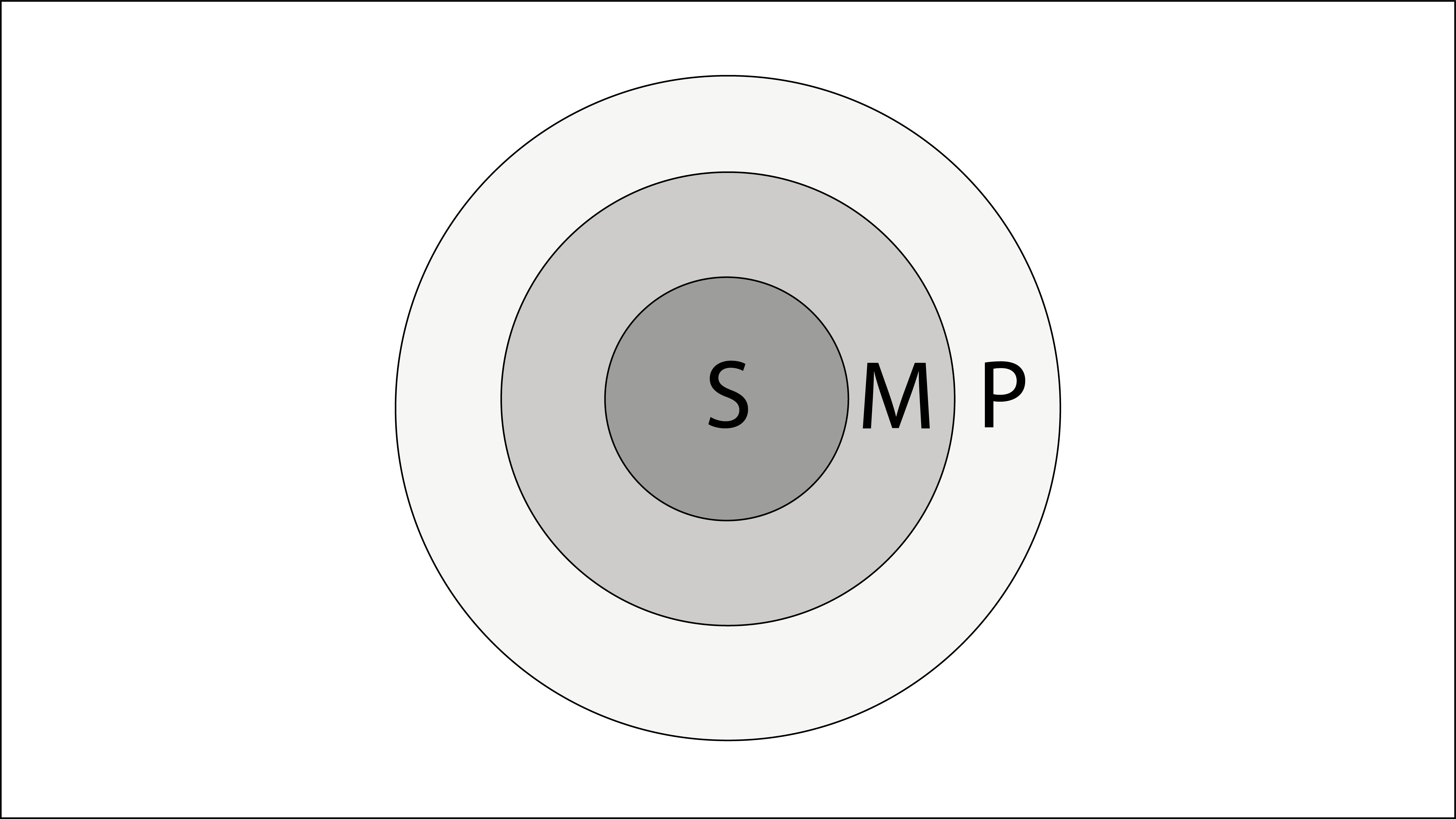
Fig. 10.7. The Relationship among Major Term, Middle Term and Minor Term
b) Induction
The method by which one attempts to reach a general assertion from a number of observed particular facts is called inductive inference, or induction. It is regarded as an application of the syllogism. The following is an example of induction:
Horses, dogs, chickens, and cows are mortal.
Horses, dogs, chickens, and cows are animals.
Therefore, all animals are mortal.
Is the conclusion “therefore, all animals are mortal” correct? This conclusion is a universal affirmative judgment. The term “animal,” therefore, has to be distributed. In this inference, however, it is undistributed, since horses, dogs, chickens and cows are a part of animals. The conclusion is stated in the form of a universal affirmative judgment as shown in fig. 10.3. However, this conclusion is, in fact, a particular affirmative judgment as shown in fig. 10.5.
Thus, strictly speaking, this inference is erroneous. However, such an inductive inference is possible in natural science because of the application of the “principle of uniformity in nature” and the “law of causality.” The former means that all phenomena in the natural world have the same form, and the latter means that the same effect is always brought about by the same cause. Accordingly, from our experiences the induction is considered to be correct.
c) Analogy
Another important mode of inference is analogy. Suppose there are two objects of observation, A and B, and it is known, through our observations, that A and B both have common natures (a), (b), (c), and (d). Furthermore, suppose that A has another nature (e), and it is difficult to observe whether B has the nature (e). In this situation, one may conclude that B also has the nature (e), which A does. This is an analogy. For example, through observations of the earth and Mars, it is known that the two planets have the following common natures:
(a) Both are planets, revolving around the sun while rotating on their axes.
(b) They have air.
(c) They have almost the same temperature.
(d) They have the changes of four seasons, and they have water.
Then, based on these facts, one may conclude that there are living beings on Mars, since such beings exist on the earth.
Analogy is often used in our daily lives. For example, present-day advanced scientific knowledge has been acquired through analogy, especially in the early stages of the development of science. Also, analogy plays an important role in our family life, group life, school life, business life, and creative activities. Therefore, the accuracy of analogy becomes an important issue. The requisites for the accuracy of analogy are:
(a) There should be as many similarities as possible in the objects to be compared.
(b) Those similarities should not be accidental, but rather essential.
(c) There should be no incompatible qualities in these similarities.
In formal logic, there are several other kinds of inferences to be dealt with, such as direct inference, hypothetical syllogism, disjunctive syllogism, the theory of fallacy, and so forth, but I will conclude here, since my intention was only to introduce the main points of formal logic.
2. Hegel’s Logic
Characteristics of Hegel’s Logic
The characteristics of Hegel’s logic are that it is not a theory about the laws and forms of thought, but rather it is a theory about the laws and forms of the development of thought. Furthermore, his theory is not about human thought, but about God’s thought. Accordingly, Hegel’s logic is the study of those laws and forms with which God’s thinking developed. God’s thinking developed from thinking about Himself to thinking about nature, and then to thinking about history and the state, and finally into thinking about art, religion and philosophy. The laws and forms concerning the development of such thinking are characteristics of Hegel’s logic.
As Hegel himself stated, his logic treats the development of God’s thinking prior to His creation of the world, and it is thus “heavenly logic,” or a description of “God as He is in His eternal essence before the creation.” 2 However, unlike formal logic, it does not deal merely with the formal laws of thought. Although it holds itself forth to be the development of God’s thinking, it attempts to deal also with the most universal definitions and laws of the real world.
Outline of Hegel’s Logic
Hegel’s logic consists of three branches, namely, the Doctrine of Being, the Doctrine of Essence, and the Doctrine of Notion. These three branches are each subdivided, such that the Doctrine of Being consists of Quality, Quantity, and Measure; the Doctrine of Essence consists of Essence, Appearance, and Actuality; and the Doctrine of Notion consists of Subjective Notion, Objective Notion and Idea, and these are each further subdivided. For example, Quality in the Doctrine of Being consists of Being, Determinate Being, and Being-for-Itself; and Being further consists of Being, Nothing, and Becoming.
The starting point for the development of Hegel’s logic is the dialectic of Being, Nothing, and Becoming. After passing through these three stages, Being moves on to Determinate Being. This Determinate Being has three further stages, and after passing through these, the Determinate Being moves on to Being-for-self. Being-for-self has three additional stages, and when they are passed through, it moves on to Quantity.
Quantity moves on to Measure by passing through its own three stages, and when Measure has passed through its three stages, the theory concerning Being comes to an end.
Next is the theory concerning Essence. Hegel’s logic moves from Essence to Appearance and from Appearance to Actuality. Then comes the theory concerning Notion. Notion moves from Subjective Notion to Objective Notion and from Objective Notion to Idea. Within Idea, there are three stages, namely, Life, Cognition, and Absolute Idea. Absolute Idea is the final destination in the development within logic.
Then the world of logic or the world of Idea negates itself, in order to realize itself truly, and moves on to the realm of Nature. According to Hegel, Idea moves on to become external to itself, in other words, Nature is the self-alienation of Idea, the negative of Idea, and Idea in the form of otherness. There are three stages of Mechanics, Physics and Organics in the realm of Nature.
Further, Idea, which externalizes itself by negating itself, returns to its original self by further negating the negation. Idea as having recovered itself through human being is Spirit. Spirit passes through the three stages of Subjective Spirit, Objective Spirit, and Absolute Spirit. Absolute Spirit stands at the highest point in the development of Spirit. Absolute Spirit develops itself by passing through the three stages of Art, Religion, and Philosophy. The above description of Hegel’s system can be illustrated in the following diagram (see fig. 10.8).
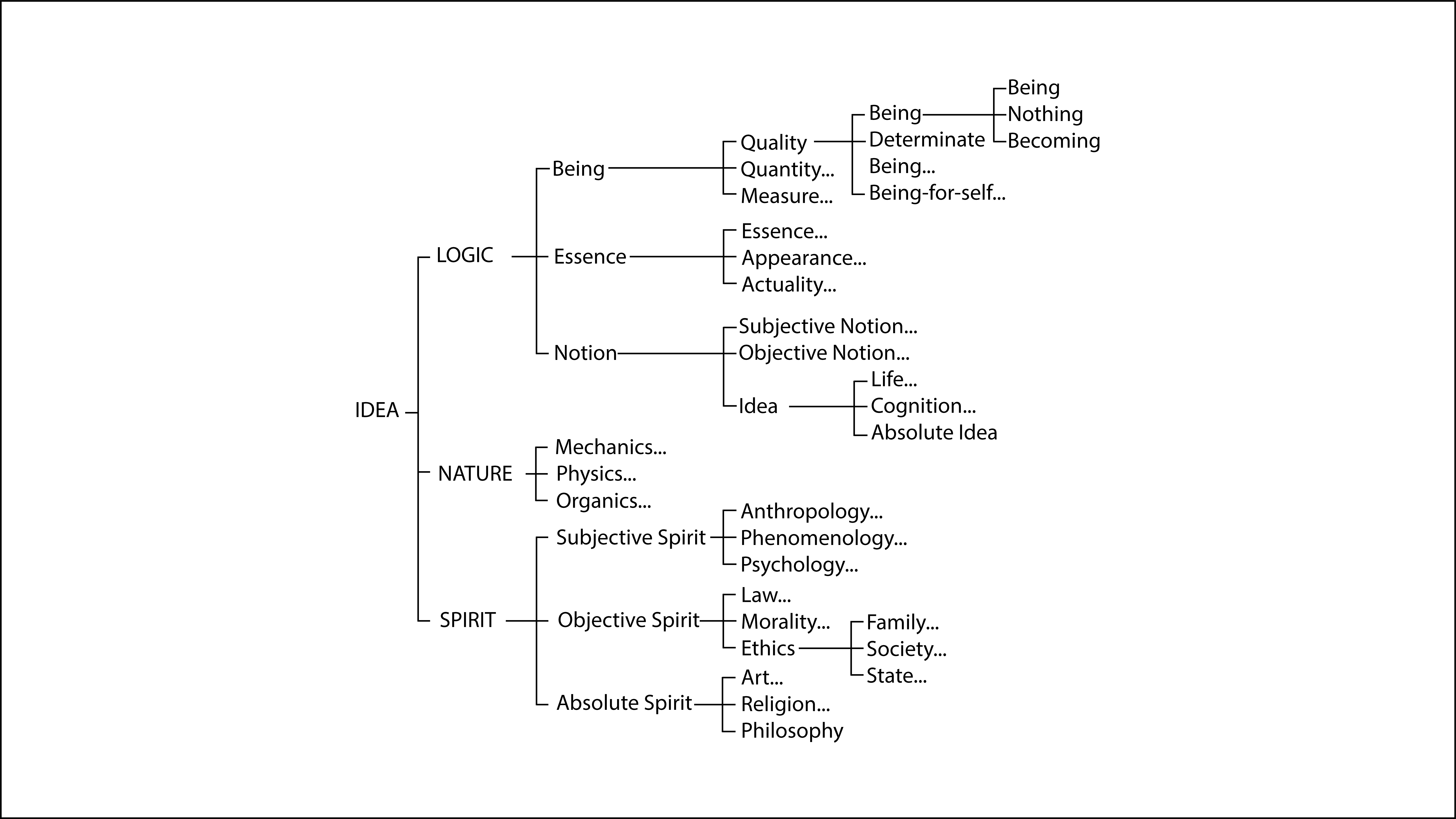
Fig. 10.8. Hegel’s System
The Dialectic of Being, Nothing, and Becoming
Hegel’s logic, starting with Being, deals with the process of reaching the Absolute Idea. Being is discussed in the Doctrine of Being, where he begins with the dialectic which consists of Being, Nothing, and Becoming. Hence, I will examine the dialectic of Being, Nothing, and Becoming, because this portion constitutes the core of Hegel’s logic.
Hegel’s logic starts with Being. 3 Being means simply that which exists, but this is the most abstract of all concepts, and is an entirely indeterminate, empty thought. Therefore, he says it is negative, namely, Nothing. For Hegel, Being and Nothing are both empty concepts, and there is little distinction between the two. 4 Next, Hegel says that the unity of Being and Nothing is Becoming. Both Being and Nothing are empty abstractions, but Becoming, which is the unity of the two opposites, is the first concrete thought. 5
With this logic of Being, Nothing, and Becoming as the basis, the logical developments of thesis, antithesis, and synthesis; and affirmation, negation, and negation of negation, etc., which are usually regarded as Hegel’s method, came to be established.
Determinate Being
Having examined Being, Nothing, and Becoming, we move on to the examination of the Determinate Being. Determinate Being is Being with a certain form, Being considered concretely. While Being means simply that which exists, Determinate Being means that which is something. Moving from Being, Nothing, and Becoming to Determinate Being, in short, means moving from the abstract to the concrete. Becoming is a contradiction containing Being and Nothing within itself, and through this contradiction, Becoming transcends itself to become Determinate Being.
In this way, Determinate Being is a definite Being, a qualified Being. This determinateness of Determinate Being was called Quality by Hegel. However, even though we may say determinate, what is considered here is simple determination. The determination that makes Being a Determi-nate Being implies the affirmative content of something, and at the same time, it implies limitation. Therefore, the quality that makes something what it is, is reality, when seen from the affirmative aspect of something, and at the same time it is negation when seen from the aspect of not being another thing.
Therefore, in Determinate Being, reality and negation, or affirmation and negation, are united. Next, Determinate Being proceeds to Being-for-self. Being-for-self refers to the Being that is neither in relationship to another thing, nor changing into another thing, but staying as itself in every way.
Being, Essence, and Notion
In the Doctrine of Being, starting from an analysis of what it is to exist, Hegel discussed the logic of change, or the logic of generation and disappearance. Next, the Doctrine of Being proceeds to the Doctrine of Essence. Here, the unchangeable aspect within things and the inter-connectedness among all things are discussed. Next, it proceeds to the Doctrine of the Notion as the unity of the Doctrine of Being and the Doctrine of Essence. Here, the fact that things do not cease to be themselves while changing into other beings―that is, self-development―is discussed. The driving force of this development is the notion and life.
Then, can one say that God’s thinking proceeded in the way of Being, Essence, and Notion? We can understand this if we watch the process of our cognition as we perceive things from the external to the internal, he says. In the case of perceiving a flower, for example, we first perceive the existence of the flower phenomenally. Next, we perceive the essence of the flower. Then, the notion of the flower is formed, in which the existence of the flower and the essence of the flower are united.
Logic, Nature, and Spirit
As mentioned before, according to Hegel, nature is Idea in the form of otherness, or Idea as self-alienated. Therefore, if Logic is made to be the thesis, then the philosophy of Nature becomes the antithesis. Next, Idea regains consciousness and freedom through the human being and becomes Spirit. Accordingly, the philosophy of Spirit becomes the syn-thesis.
The natural world, also, performs the dialectical development of thesis, antithesis, and synthesis, that is, the three stages of Mechanics, Physics, and Organics. This does not mean, however, that nature itself develops, but rather, this is the process through which the Idea behind the natural world manifests itself. First, the concept of force appears; next, the concept of physical phenomena; and then, the concept of living beings, he says.
Finally, the human being appears, and the Spirit develops itself through humankind. This development takes place in the three stages of Subjective Spirit, Objective Spirit, and Absolute Spirit. Subjective Spirit refers to the spirit of the individual; Objective Spirit refers to the socialized spirit, or the objectified spirit transcending the individual.
Objective Spirit has the three stages of Law, Morality, and Ethics. Law refers not to something systematized like the constitution of a state, but to elementary forms in human relationships, like a group of people. Next, man comes to respect the rights of others and to lead a moral life. However, there are still many subjective aspects (individual aspects) there. Thus, ethics appears as the norms that everyone should communally observe. The first stage in ethics is the family. In a family, members are linked with one another through love, and there is freedom there. However, in the second stage, namely, civil society, the interests of individuals conflict with one another, and freedom becomes restricted. Thus, in the third stage, the state, which integrates the family and civil society, appears. Hegel considered that Idea would manifest itself fully through the state. The state in which the Idea is actualized is the rational state. Human freedom will be fully actualized in that state.
Finally, there appears Absolute Spirit. Absolute Spirit manifests itself through the three stages of art, religion, and philosophy. When it comes to the stage of philosophy, Idea regains itself completely. The dialectical movement of Idea returns to the origin in this way. Nature appears; the human being appears; the state appears; art, religion, and philosophy appear; and finally Idea returns to the Absolute Idea (God). 6 By accomplishing this return, the entire process of development comes to an end 7 (see fig. 10.9).
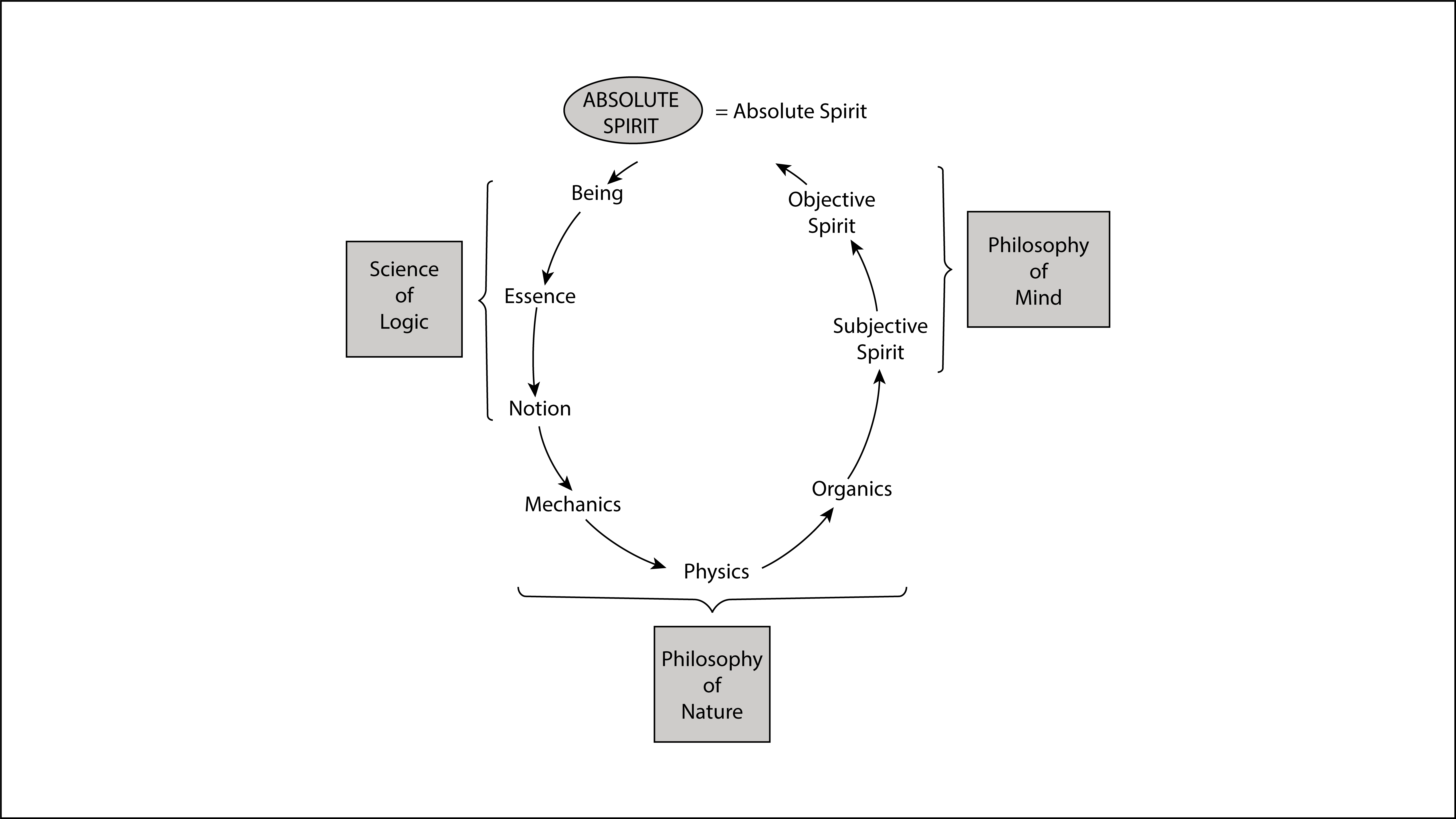
Fig. 10.9. The Returning Nature of Hegel’s Dialectic
Triadic Structure of Hegel’s Logic
As already explained, the beginning of Hegel’s dialectic is the triad (the three stage process) of Being, Nothing, and Becoming, which is the dialectical development of thesis, antithesis, and synthesis through contradiction. The triad process repeats several times, and these processes are combined to form the highest triad of Logic, Nature, and Spirit. The three stage process in Logic is Being, Essence, and Notion, and in the stage of Notion, God’s thought becomes the Idea (finally, the Absolute Idea). Passing through the stage of Logic, the Idea alienates itself and appears as Nature, and then, through humans, it appears as Subjective Spirit, Objective Spirit, and Absolute Spirit. Finally, it returns to itself, namely, the Absolute Idea, the starting point.
The philosophy of Nature and the philosophy of Spirit are not independent from logic in Hegel’s philosophy. Logic, which is the first stage of the triad, contains the philosophy of Nature and the philosophy of Spirit as prototypes. As already explained, God’s thought becomes Idea in the stage of Notion in the triadic process of Being, Essence, and Notion. The Idea is the prototype of the philosophy of Nature and the philosophy of Spirit. In other words, it has the blueprint of the universe. Hence, the philosophy of Nature and the philosophy of Spirit are but the manifestations of the prototype within the Idea, in the same way as the moving pictures on a screen are the reflection of the pictures in a role of film. In other words, Hegel’s logic, which is the first stage of the triad, is the prototype of the philosophy of Nature and the philosophy of Spirit. Therefore, Hegel’s entire philosophical system is contained in his logic. The dialectic of Hegel, which deals with the development of God’s thinking, is usually called an idealistic dialectic.
The Circular Nature, Laws, and Forms in Hegel’s Dialectic
As already explained, Hegel’s dialectic is a returning and circular movement whereby the original stage is restored at a higher standard through the repetition of the three stages of thesis, antithesis, and synthesis. This nature applies to the lower level triads as well as to the higher level triads. In addition to this, Hegel’s dialectic has a completing nature, since there is no more development when the Absolute Spirit has restored itself.
Let us briefly compare the laws and forms in Hegel’s logic with those of formal logic. The laws in formal logic are the law of identity, the law of contradiction, and so forth, and the forms are the forms of judgment, and the forms of inference. In contrast, the laws in Hegel’s logic are dialectical laws, such as the law of development through contradiction, the law of the transformation of quantity into quality, the law of negation of the negation, and so forth; the form is that of a dialectical development, namely, the three stages of thesis, antithesis, and synthesis. A logic with such a form of development is called a dialectical logic.
3. Dialectical Logic (Marxist Logic)
According to Hegel, Idea manifests itself as nature in the clothing of matter; therefore, objective reality is Idea. Marx, however, asserted that objective reality is matter, and that ideas are merely the reflections of the material world on human consciousness. Yet Marx accepted, without change, Hegel’s dialectic of thesis, antithesis, and synthesis, and asserted that it is in fact the form of material development. Accordingly, in opposition to Hegel’s “idealistic dialectic,” Marx’s dialectic is called a “materialist dialectic.”
Based on such a materialist dialectic, Marxist logic was established. The materialist dialectic is the same as the idealistic dialectic in that both have the three-stage process of thesis, antithesis, and synthesis; therefore, Marxist logic is also called a dialectical logic. Its original characteristic is its opposition to formal logic, especially to the law of identity and the law of contradiction; 8 that is because, according to dialectical logic, in order for things to develop, A should be A and at the same time it should be not-A; and because the laws of thought should be the reflection of the material development of things. From the position of a materialist conception of history, Marxists assume that the forms and laws of thinking advocated by formal logic belong to the superstructure and have a class nature, so they should be rejected and a new dialectical logic created, in opposition to formal logic. 9 However, if formal logic was to be rejected, then one would inevitably run into difficulty: without formal logic, it is impossible to conduct coherent and correct thinking.
Linguistics also faced a similar difficulty. Based on the assertion that language belongs to the superstructure, and has a class character, it was argued that a new Soviet language should be created in place of the old Russian language. 10 However, this was almost impossible. Therefore, in 1950, Stalin published a paper entitled “Marxism and the Problems of Linguistics,” asserting that language does not belong to the superstructure nor does it have a class nature. With this thesis as the starting point, a series of discussions took place in the Soviet Union from 1950 to 1951 on the subject of how to evaluate formal logic. From those discussions, the conclusion was reached that the forms and laws of formal logic do not belong to the superstructure and do not have class nature. Concerning the relation between formal logic and dialectic logic, it was decided that, “while formal logic deals with the elementary laws and forms of thinking, dialectical logic is a higher logic concerning the laws of development of objective reality and of thinking, which is the reflection of objective reality.” 11 Yet, logic based on a materialist dialectic, namely, dialectical logic, makes only basic assertions, such as criticizing the laws of identity and the law of contradiction. As a matter of fact, it has not been systematized as of yet. 12
4. Symbolic Logic
Symbolic logic, which is a development of formal logic, is an attempt to apply the correct method of judgment by using mathematical symbols. Symbolic logic contrasts with formal logic in certain important ways. In formal logic, the subject matter is the relationship of implications between terms, that is, the relationship of implications between the subject and the predicate in a proposition. In contrast, symbolic logic focuses on the connection between terms, or between propositions, and its subject-matter is the study of the laws of thought through the use of mathematical symbols.
The five basic forms of connection between propositions are as follows (where p and q are two propositions):
ⅰ) Negation
ⅱ) Disjunction
ⅲ) Conjunction
ⅳ) Implication
ⅴ) Equivalence
“not-p” . . . . ∼p (or p̄)
“p or q” . . . . p ⋎ q
“p and q” . . . . p ● q
“IF p then q” . . . . p ⊃ q
“p equals q” . . . . p ≡ q
Through the combination of these five basic forms, any complicated deductive inference can be accurately expressed. For example, the basic laws of formal logic, namely, the law of identity, law of contradiction, and law of the excluded middle, can be symbolized as follows:
Law of identity
Law of contradiction
Law of excluded middle
p ⊃ q or p ≡ q
∼( p ● ∼p) or ( p●p̄ )
p⋎ ∼p or p⋎p
Philosophers often proposed extensive thought systems, but the question is whether or not their logical constructions are correct. In order to ascertain their correctness, we need to use mathematical symbols and make calculations. Symbolic logic came into being from such a point of view.
5. Transcendental Logic
Kant’s logic is called a transcendental logic. Concerning the question of how objective knowledge can be obtained, Kant held that objective knowledge can be obtained by thinking, through one’s forms of thought, about the sense content gained through forms of intuition.
As already explained, thinking follows certain forms: the judgment forms and inference forms in formal logic; the three stages of dialectical form in Hegel’s logic; the forms of intuition and twelve forms of thought in Kant. Kant divided judgment into four headings: quantity, quality, relation, and mode. Further, he divided each of these into three kinds, establishing twelve forms. Based upon these forms, he established twelve forms of thought, or twelve categories. A category is the most basic framework through which we think. Categories are also called a priori concepts.
Kant held that the forms of intuition and the forms of thought are a priori, and not related to experience. His logic is called a transcendental logic. Cognition, however, can not be achieved with only a priori forms. Cognition takes place when the a priori forms are connected to the sense content from an outside object, whereby an object of cognition is finally synthesized. Kant’s forms of thought are forms for cognition. They are concepts, or categories. A concept is something like an empty container. It is meaningless if there is no content. For example, the concept of “animal” has no substance (content) and it is merely a concept, whereas individual beings that really exist such as chicken, dog, horse, shark, and so on are beings with concrete content.
For Kant, things-in-themselves can not be known. The things themselves send various stimuli to our sense organs, whereby this manifold of sense―sense content, or sense qualities―is perceived. When the sense content and the concept of an “animal” are united the object of cognition is synthesized, for example a chicken or a dog. Thus, the forms of thought themselves are only an empty framework, and only when they are filled with the qualities from the outside, is the object of cognition synthesized. Thus, in Kant, cognition is that of the synthesized object.
Formal logic since Aristotle has dealt with the general forms and laws of thought, without considering the object of thought. Kant’s logic, however, was epistemological logic, aiming to verify how knowledge about the object is achieved.